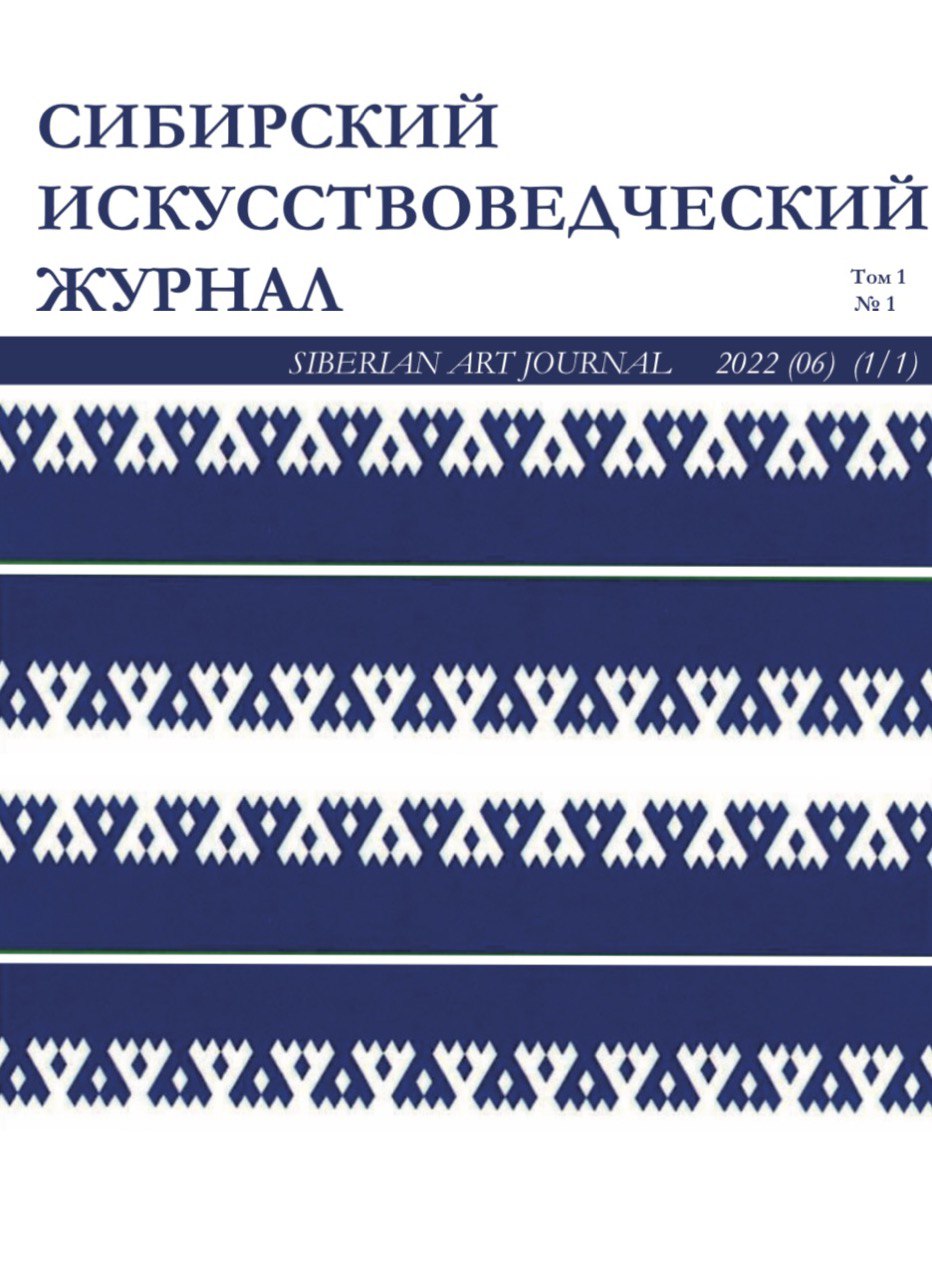Russian Federation
The paper is dedicated to the study of the architectural oeuvre by Michelangelo Buonarroti. Based on the analysis of sculpture, painting and architecture by the brilliant master of the Italian Renaissance, the author of the article proves that the architectural aspect is inherent in all of Michelangelo’s creations. The study provides an elemental, structural and functional analysis of the architectural project of the Capitoline Square. Revealing the main idea of the Capitoline project, the author of the paper demonstrates how Michelangelo’s architectural output correlates with the artist’s pictorial creations. The study reveals the essence of the artistic dialogue between the architectural project of the Capitoline Square and the monumental pictorial project of the Sistine Chapel.
Michelangelo Buonarroti, Italian Renaissance, art, architecture, project, the Capitoline square, Rome, Marcus Aurelius, the Sistine Chapel
1. Batkin L. M. (1978). On the origins of the tragic in the High Renaissance, in Rotenberg E. I., Gershenzon-Chegodaeva N. M. (eds.), Michelangelo and his time Collection of articles, Moscow: Iskusstvo, 115–137.
2. Dvořák M. (1978). History of Italian art in the Renaissance period Lecture course, Moscow: Iskusstvo, 423.
3. Zhukovsky V. I. (2001). The formula of harmony, Krasnoyarsk: BONUS, 208.
4. Sedlmayr H. (1936). The composition of the Capitoline Hill, in Architectural creativity of Michelangelo Collection of articles, Moscow: Publishing House of the All-Union Academy of Architecture, 97–103.
5. Makovsky K. (1936). Architectural works of Michelangelo, in Architectural creativity of Michelangelo Collection of articles, Moscow: Publishing House of the All-Union Academy of Architecture, 27–54.
6. Rotenberg E. I., Gershenzon-Chegodaeva N. M. (eds.). (1978). Michelangelo and his time Collection of articles, Moscow: Iskusstvo, 232.
7. Grashchenkov V. N. (comp.), Lazarev V. N. (intro.). (1964). Michelangelo Life and work, Moscow: Iskusstvo, 319.
8. Grashchenkov V. N. (comp.). (1983). Michelangelo Poetry Letters Judgments of contemporaries, Moscow: Iskusstvo, 288.
9. Correspondence of Michelangelo Buonarroti and the life of the master written by his pupil Ascanio Condivi (1914), Saint Petersburg: Shipovnik, 267.
10. Poetry of Michelangelo translated by A. M. Efros (2015), Moscow–Berlin: Direct-Media, 142.
11. Rotenberg E. I. (1964). Michelangelo, Moscow: Iskusstvo, 304.
12. Sobotta R. (1936). The significance of Michelangelo in the history of architecture, in Architectural creativity of Michelangelo Collection of articles, Moscow: Publishing House of the All-Union Academy of Architecture, 105–111.
13. Tolnai K. (1936). The Capitoline Hill, in Architectural creativity of Michelangelo Collection of articles, Moscow: Publishing House of the All-Union Academy of Architecture, 94–97.
14. Ackerman, J. (1961). The Architecture of Michelangelo. 2 vols. New York.
15. Argan, G. C., Contardi, B. (1993). Michelangelo Architect, trans. Marion L. Grayson. New York.
16. Balas, E. (1995). Michelangelo’s Medici Chapel: a New Interpretation, Philadelphia.
17. Brothers, C. (2008). Michelangelo, Drawing, and the Invention of Architecture. New Haven.
18. Clemens, J.R. (1962). Michelangelo’s Theory of Art. New York.
19. Cooper, J. G. (2002). The genesis and design of Michelangelo's Campidoglio. University of Virginia.
20. Cooper, J. G. (2011). Michelangelo’s Laurentian Library: Drawings and Design Process. Architectural History.
21. Elam, C. (2005). Tuscan Dispositions: Michelangelo's Florentine Architectural Vocabulary and its Reception. Renaissance Studies, 19/1, 46-82.
22. Hartt, F. (1987). History of Italian Renaissance Art. New York.
23. Hemsoll, D. (2003). The Laurentian library and Michelangelo's architectural method. Journal of the Warburg and Courtauld Institutes. 66 (1), 29-62.
24. Hirst, M. (1989). Michelangelo and His Drawings. New Haven.
25. Lieberman, R. (1985). Michelangelo's Design for the Biblioteca Laurenziana, in Renaissance Studies in Honor of Craig Smyth. Florence, 571-595.
26. Maurer, G. (2004). Michelangelo: Die Architekturzeichnungen, Entwurfsprozes und Planungspraxis. Regensburg.
27. Morough, A. (1995). The Palace of the Roman People: Michelangelo at the Palazzo dei Conservatori. Rome.
28. Morrogh, A. (1992). The Magnifici Tomb: A Key Project in Michelangelo's Architectural Career // Art Bulletin, 74, 578-98.
29. Mussolin, M. et al. (2017). Michelangelo and the Experience of Space, in Michelangelo: Divine Draftsman and Designer, 273-278.
30. Salmon, F. (1990). The Site of Michelangelo's Laurentian Library, Journal of the Society of Architectural Historians, 49, 407-429.
31. Summers, D. (1972). Michelangelo on Architecture. The Art Bulletin, 54(2), 146-158.
32. Thies, H. (1982). Michelangelo, das Kapitol. Munchen, Bruckman.
33. Wallace, W. (1994). Michelangelo at San Lorenzo, the Genius as Entrepreneur. New York.
34. Wilde, J. (1955). Michelangelo's Designs for the Medici Tombs, Journal of the Warburg and Courtauld Institutes, 18, 54-56.
35. Wittkower, R. (1934). Michelangelo’s Biblioteca Laurenziana. The Art Bulletin, 16, 123-218.
36. Wolin, J. (1980). The Inner Eye: Speculations on Michelangelo's Architecture and Florentine Neo-Platonism. Modulus, 68-72.





